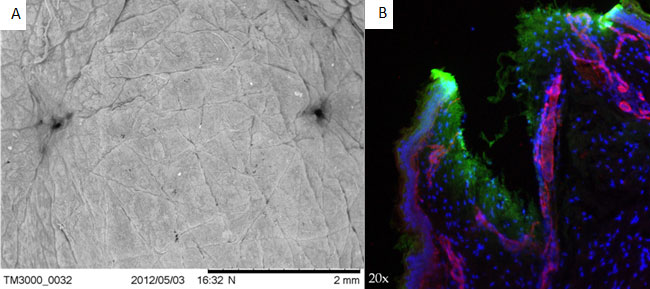A personalized drug administration method and a more reliable electrical interface for monitoring biopotentials (electroencephalogram, electrocardiogram, electromyography) are pivotal matters in the clinical community. In order to overcome, in a minimally invasive way, the complex skin barrier, including stratum corneum, we explored a technological platform based on microneedles several years ago.
The aim of our research was to design, develop and test innovative transdermal devices, deriving from nano- and micro- technologies, for improving diagnosis and therapeutic treatments. In particular we worked in a successful way on two projects: a “transdermal cartridge” for drug delivery and a “dry electrodes” device for the measurements of biosignals.
We developed non-miniaturised prototypes with a hollow or solid microneedles matrix (max 1 mm tall). We performed morphological, pharmacokinetic (insulin delivery) and biomechanical tests on human skin biopsies and on in-vivo rats. Transdermal cartridge results demonstrated the piercing of the epidermis and the insulin infusion into the epidermis and dermis reaching the dermal capillaries (see the figures). Dry electrodes results demonstrated a successful piercing of the epidermis with suitable insertion force. We performed biopotentials analysis in healthy volunteers highlighting good quality signals and more stable skin-electrode interface with a pain intensity score of 0.5cm (see the figures).
Thanks to our wide experience on this field we conclude that our microneedles devices could potentially improve compliance and the quality of life of patients with chronic diseases.
We also patented our microneedles ideas and data for biosignals monitoring ( see PCT/EP2011/057430) and for transdermal drug delivery (see PCT/EP2011/073859).

B: Immunofluorescence analysis of skin piercing; in green the insulin green-labeled infused till to dermis, in blue the nuclei, in red the laminin.





